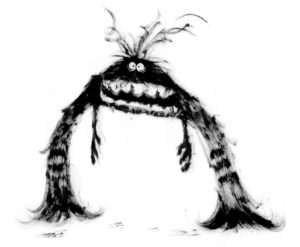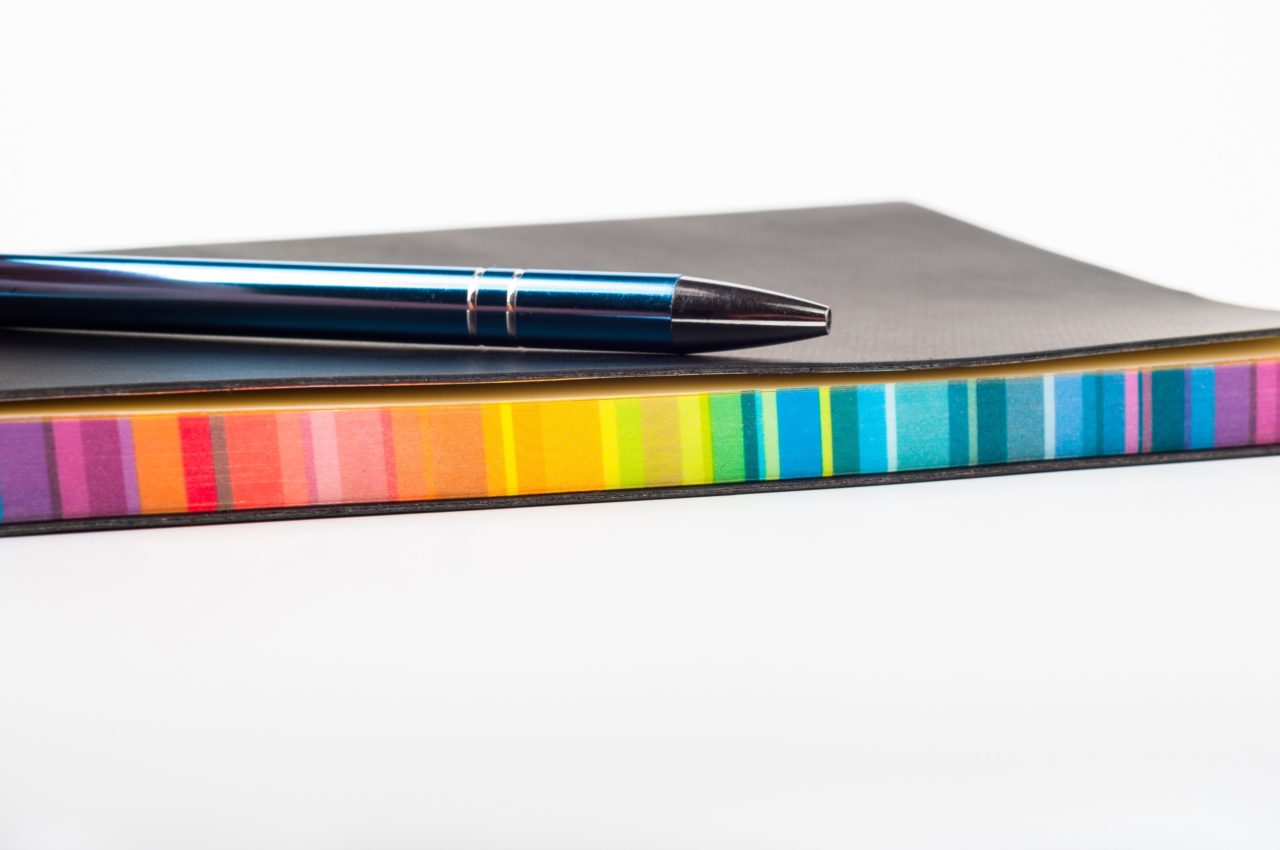Illustrator: Ilaria Guarducci
Amazon Crossing Kids
1 July 2019
36 pages
This month’s PB review is by Ryan G. Van Cleave (Top Spiked Friend at Only Picture Books) and Ringling College of Art and Design Illustration Professor (and OPB wunderkind) John Herzog.
–Ryan’s Review of the Writing–
Originally published in Italy, Spiky is now in offered in an English-language edition thanks to the efforts of award-winning translator Laura Watkinson. (I know Laura’s work. Her Dutch-to-English work on Tonke Dragt’s YA novel The Letter for the King is great–it’s going to be a Netflix series too, I hear!).
I have mixed feelings about this book. Let’s start with Spiky himself. There’s no two ways about it–he’s a jerk. He lives in the dark forest where he spends his days being a bully. He’s also a little too enamored with his own spikes, which he loves since they help keep everyone at a distance.
“He was spiky, he was bad, and he didn’t need anyone at all.”
Thanks to being sent to bad school by his father, Mr. Spikington, Spiky grew even more nasty. He stole snacks. He raised a ruckus. He tormented the trees. And he “pulled the wings off butterflies. If he couldn’t fly, why should they?”
I’m all for showing how a PB creature isn’t doing good things, but Spiky doesn’t stop there. He captures robins and sticks them in jars. He plucks the petals off flowers. He pricks holes in snail shells. He laughs at toads for “being so ugly.” I worry that some readers will stop at this point because it’s all pretty one-note, and it’s very, very dark, too.
The second potential hiccup I see is that one day, for no given reason, he starts to lose his spikes. I fully understand how this makes sense plotwise–it’s a way to turn the tables and disempower the nasty critter called Spiky by stripping the physical element of menace from him. But in terms of story logic, this seems random. That troubles me all the more so because it could’ve easily been connected to an action Spiky took in all of his wrongdoings–poetic justice of sorts.
When Spiky’s finally gone bald as a naked mole rat, he’s lost his power. Yet the bully now gets teased in return. The snails sneer. The toads titter. I’m not sure that’s the right lesson here for young readers, though admittedly, we all take some bit of joy in seeing a tormentor get their due.
From this point on, I like a lot about the book. Bernardo the bunny is a hip (hopping!) character with Yoda-wise advice and a kumbaya mentality. Spiky, too, gets a personality makeover.
Then WHAM, Spiky suddenly–without a catalyst or reason again–grows back his spikes. And he’s tempted to return to his nasty ways. Yet he doesn’t because being good and letting friends get close to you, both physically and emotionally, is “very, very good.”
Sidenote: He never apologies or made friends with the critters he tormented. That part feels unresolved.
So for OPB, Spiky is a mixed bag. I admire how Guarducci takes on the narrative challenge of trying to make a villain into a hero. I also appreciate the novelty of such an odd protagonist.
Yet the images are odd at times (see John’s comments below), and the story feels long–mostly in terms of the extended “hey, he’s nasty!” opening with so many examples and the slow wind-down at the end when Spiky eventually makes the final decision to eschew his old ways.
I wish I could read Italian so I could examine a copy of the original, called Spino, and see if the same things I’m encountering here are evident there. After all, it was shortlisted for the Soligatto Award for Best Italian Picture Book.
100+ Amazon reviews have Spiky averaging 4 stars. OPB can’t quite get behind it with the same level of enthusiasm.
3 out of 5 pencils
–John’s Review of the Illustrations–
From both a storytelling and illustration standpoint, I have some major issues with Ilaria Guarducci’s Spiky, which essentially tells the story of an antagonist who becomes a protagonist. It’s a valiant effort, and I recognize that. However, in both story and images, it’s a bit misguided and muddled.
First, the story: We’re introduced to the titular Spiky, a monster who was raised up to be bad. Not bad as in “putting the wrong items in the recycling bin” bad. No, I’m talking about “pulling wings off butterflies, trapping birds in glass jars” kind of bad. He’s proud of his spikes and uses them to terrorize the forest animals around him. He’s a completely unlovable main character, which is the point (no pun intended). However, as the story progresses, an event happens that completely changes Spiky’s attitude toward life, and this is where things go a bit sideways. First of all, this event is completely out of Spiky’s control, making his change of character involuntary and detracting from the overall message of the story. He’s forced to change, as opposed to changing because he wants to. Granted, this can work in certain circumstances–take the movie Groundhog Day, for example–but it needs to be done in a way where we’re ultimately charmed by the character we originally found repulsive. Spiky never really redeems himself in a believable way, and isn’t particularly charming by the end. I wanted to care, but I just didn’t.
I’m also not sure what I’m supposed to get out of this story. It feels like Guarducci is trying to tackle too many problems all at once. She tries to combine Spiky’s personal change with the importance of positive friends with the whole “don’t judge a book by its cover” message–and it ends up a mess in the process.
Now, the illustrations: There’s such a missed opportunity here to implement some contrast. Everything feels the same, incorporating a faux, digital gouache look and texture. There’s a fine line between interesting and boring, and this fell a bit on the boring side for me. I would love to have seen Spiky rendered with more of a streaky, old marker look so he stands out a bit more–see the example concept art from Monsters University below, which demonstrates this technique rather effectively:
 © DISNEY/PIXAR
© DISNEY/PIXAR
As the story progresses and Spiky goes through his change, perhaps then he could’ve looked more like the characters and environment around him to give more of a feeling of unity. But as it is right now, he blends in with the backgrounds and overall texture the entire time, making his journey feel far less important than it really should. The character designs are adequate enough, with Spiky probably being the strongest. However, the bunnies really should’ve been rounder, fluffier, and just cuter overall.
The aspect of Spiky that I enjoyed most was all of the horrible things Spiky would do to the woodland creatures around him. The character’s actions don’t talk down to kids, which I absolutely love. Kids can handle hard things, and this book doesn’t pull any punches. Guarducci does a fantastic job setting up a loathsome character that I want to see redeemed at the end. Unfortunately, due to the muddled story and monotonous illustrations, his redemption ultimately feels dishonest and superficial.
2.5 out of 5 crayons
![]() John Herzog is an illustrator and educator. His clients include Hasbro, Dreamworks TV, Houghton Mifflin Harcourt, and Highlights for Children. He also teaches illustration classes at Ringling College of Art and Design. John is a member of the Society of Illustrators and SCBWI, and received the 2018 SCBWI Magazine Merit Award for his Highlights High Five cover illustration. He lives in Florida with his wife, two kids, a tarantula, a bearded dragon, and a fish.
John Herzog is an illustrator and educator. His clients include Hasbro, Dreamworks TV, Houghton Mifflin Harcourt, and Highlights for Children. He also teaches illustration classes at Ringling College of Art and Design. John is a member of the Society of Illustrators and SCBWI, and received the 2018 SCBWI Magazine Merit Award for his Highlights High Five cover illustration. He lives in Florida with his wife, two kids, a tarantula, a bearded dragon, and a fish.


![Spiky by [Guarducci, Ilaria]](https://images-na.ssl-images-amazon.com/images/I/51ZcJ6982FL.jpg)